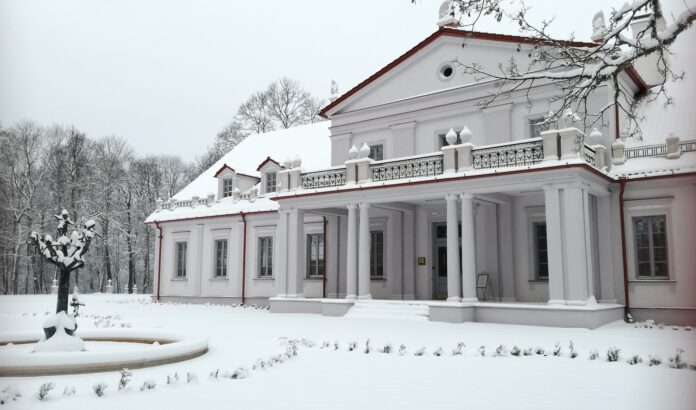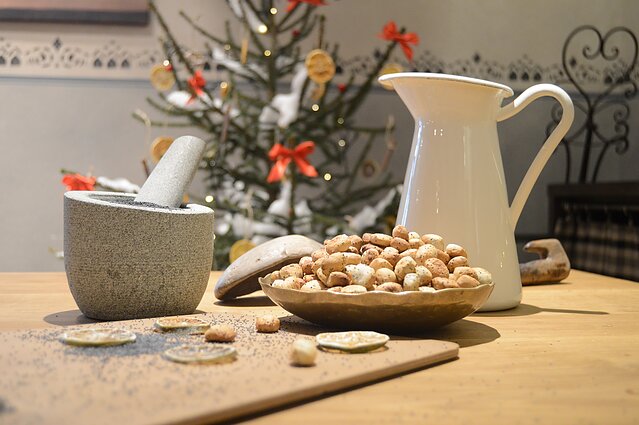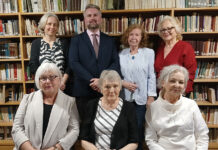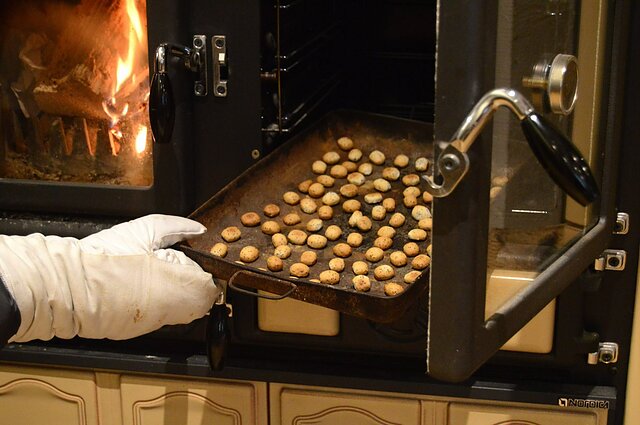
Centuries ago in Lithuania, at the estates of the rich and noble, Christmas was celebrated much as we do today. The Christmas Eve – Kūčios – table was equally festive with beautifully decorated fish, herring, and poppy-seed biscuits. We are lucky to share this meal with our families and friends. Back then, landowners were obliged to include all their workers as well.
In olden times, estates were at the centre of social activity, and nobles entertained not only official guests but also local and foreign scholars, artists and other cultural figures. Many people were employed at estates – servants, cooks, office clerks, farm supervisors. It was the estate-owners’ duty to provide for them all, to ensure the quality of their work. According to architectural historian Dr. Marius Daraškevičius, in those days the estate-owner was seen as the father of the estate community, and the workers were to be cared for like children.
The estate was an institution, not unlike a corporation today, and the workers needed to be motivated and rewarded for their service. A landowner’s family life was interwoven with his public duties.
At first the general feasting took place at long tables arranged in the manor’s largest halls. In later times, estates were reconfigured with smaller salons and rooms designated for dining, which could hold 30-40 diners. Many nobles had chefs from foreign countries, which meant that dining fashions would change.
Daraškevičius notes that in the time of Stanislovas Augustas Poniatovskis, the French custom of serving individual portions at intervals with flair replaced the earlier delivery of food in large cauldrons. The less prosperous nobles who did not have chefs from abroad ate the local cuisine – soups, cabbage rolls, beef roulades (zrazai). Because of its religious context, the Christmas Eve meal was usually modest.
The tradition of Christmas trees came from Western Europe and were first introduced at manor-houses. After Christmas Eve Mass everyone would gather to light the Christmas tree, sing carols and exchange gifts. On the second or third day of Christmas (Boxing Day or the day after), a Christmas pageant was held for the workers’ children, with a nativity scene and a Bible story reading. Christmas marked the end of the work year, when taxes and wages were paid, and plans were made for the year to follow.
Although there is little information about actual gifts, Daraškevičius explained that gift-giving to workers and their children was obligatory. Children could expect toys, candies and other treats.
In the Rokiškis district of north-eastern Lithuania, the Ilzenberg estate has been reopened for local cultural activities, including traditional feasts, dances and concerts. Here the gifting is continued, with locally-made beverages, poppy-seed biscuits, honey, branch-cakes (šakočiai) and other baked goods for visitors.
Poppy-seed biscuits are one of the traditional foods served on Christmas Eve. Eaten alone or with poppy-seed milk or cranberry pudding (kisielius), they are called by various names in Lithuanian, most often šližikai, prėskučiai or kalėdaičiai, and more recently – kūčiukai. They are as important at Christmas as bread itself, and have a symbolic meaning held over from pagan times, when a loaf of bread was offered on an altar at the winter solstice. Now the kūčiukai are a ceremonial form of bread offered to the souls of the departed, and left on the table after Kūčios for them.
There’s still plenty of time to make them before Christmas! Here is a recipe
Christmas Eve Biscuits
Ingredients:
1 package dry yeast
¼ cup warm water (105-115oF)
¾ cup milk
1 egg, beaten
¼ cup butter, melted
3½ to 4 cups flour
¼ cup sugar
1 tsp salt
Method:
In a large bowl, dissolve yeast in warm water, let stand for 5 minutes. Add milk, egg and butter to yeast mixture. In a separate bowl, mix the flour, sugar and salt, then gradually stir into yeast mixture. Add more flour as needed to make a smooth elastic dough. Add more flour if necessary, or warm water if the dough is too stiff. Cover with dishtowel and allow to rise for 1 to 1½ hours. Punch down and add poppy seeds, allow to rise again 1 to 1½ hours.
Turn onto floured board, divide into balls and roll them into finger-width coils. Cut coils into ½-inch pieces, place on a lightly greased or parchment-lined cookie sheet and bake at 350 oF until golden brown (12-15 min.). Remove from pan immediately. Once cool, store in an airtight container.





























